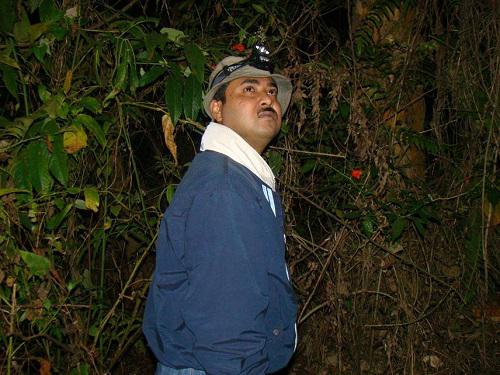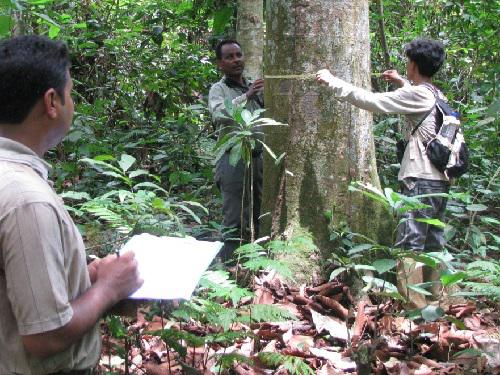Nabajit Das
Other projects
18 Jun 2010
Behavior and Feeding Ecology in Relation to Habitat Quality of Vulnerable Bengal Slow Loris (Nycticebus bengalensis) in Gibbon Wildlife Sanctuary, Assam, India
25 Jul 2012
Assessment of Threats and Conservation of Bengal Slow Loris (Nycticebus bengalensis) through Community Participation in Arunachal Pradesh, Northeast India
14 May 2015
Securing the Conservation of Bengal Slow Loris (Nycticebus bengalensis) through Community Participation in Kamlang Namdapha Landscape, Arunachal Pradesh, India
The aim of this project is to quantify the present population status of Bengal Slow loris in the major Protected areas of Assam, India; including its habitat utilization pattern and its threats.

Nabajit Das.
The genus Nycticebus, native to South and Southeast Asia is one of the least studied Asian primates, owing to its nocturnal lifestyle and its small body size. In many Asian countries slow loris are in high demand for traditional medicine. With their low reproduction rate, wild populations of Nycticebus cannot withstand these large-scale off-takes and many authors report regional population declines. Similarly the Bengal Slow loris (Nycticebus bengalensis), only recently has been recognized as a valid species distributed throughout Bangladesh, China, Thailand and NE States of India, are seriously suffering from escalating habitat destruction. Due to limited information, the Bengal Slow loris, which is endemic to South and Southeast Asia, categorized as Data Deficient in IUCN Red list (2006).

Recording habitat data in Gibbon WLS.
Bengal Slow loris is reportedly distributed throughout NE India, Bangladesh, China and Thailand. Virtually no detail study has been conducted on its status and ecology of this species in India; hence no conservation action plan has been formulated in this region. Preliminary survey has indicated the presence of Slow Loris in Assam, India. Such studies have also indicated that the existence of the species is seriously threatened by hunting and deforestation.
In Assam, Lack of information about the current population and habitat status, general ecology and habitat utilization pattern of Slow loris demand specific studies to formulate a comprehensive a well as site-specific conservation action plan for the species and its habitats. In this study, which is the first step of integrated research and conservation program of Slow loris in the protected areas of Assam, we will try to know the following:
(a) present distribution and population status of Slow Loris in the PA of Assam;
(b) habitat of the Slow Loris in term of quantitative vegetation structure, density, and species composition;
(c) food plants used by Slow Loris in different habitat type;
(d) daily range, home range and habitat utilization pattern of Slow Loris;
(e) threats evaluation from various angle viz., population, demography, quality of habitat and behavioural ecology to prioritize its conservation intervention.